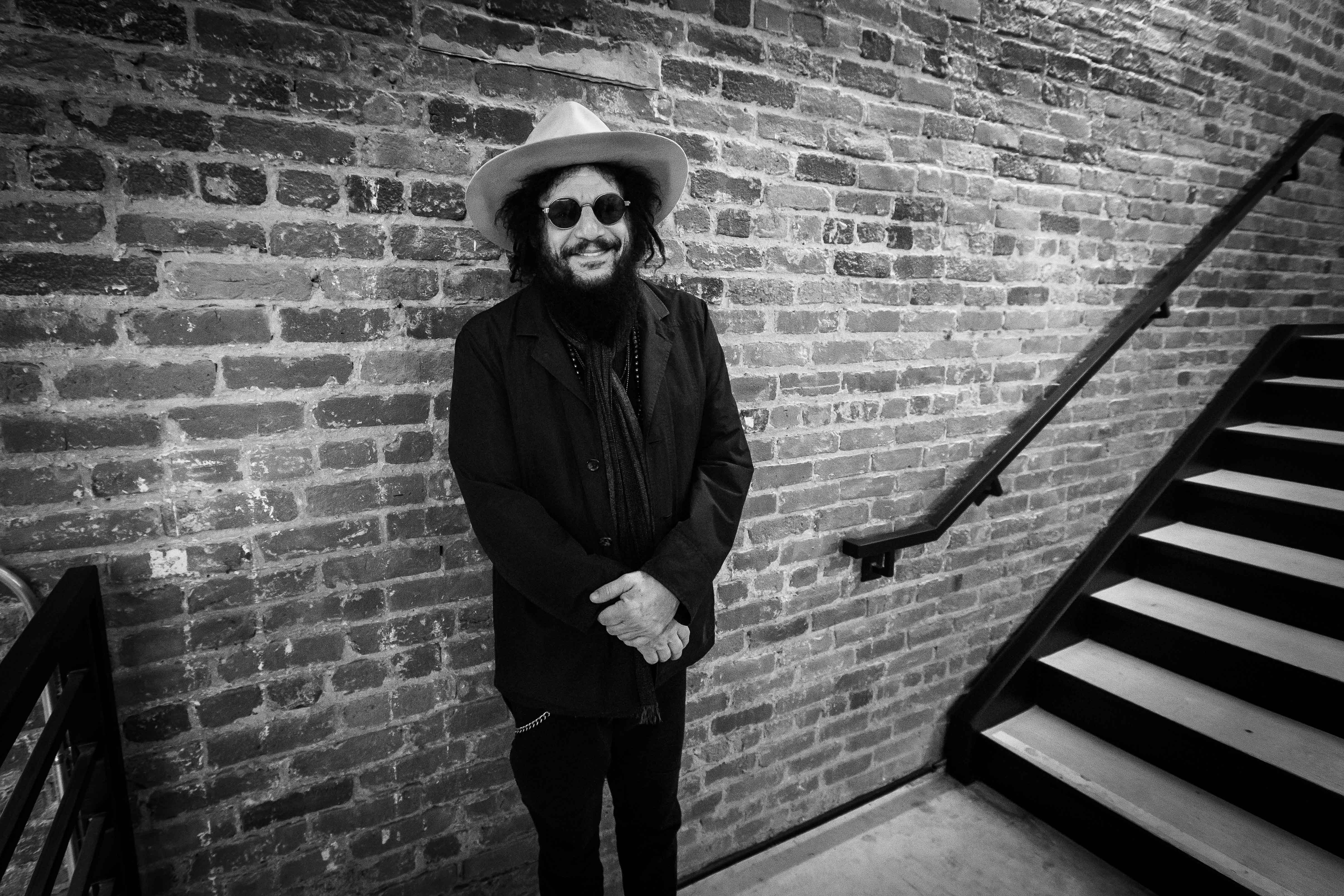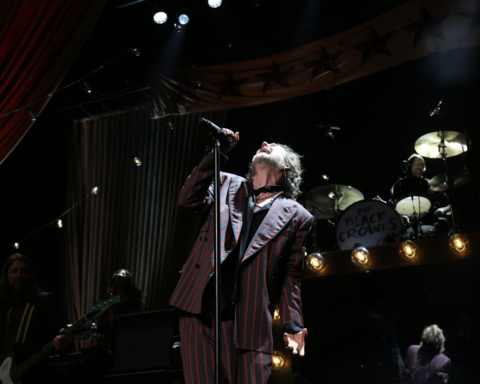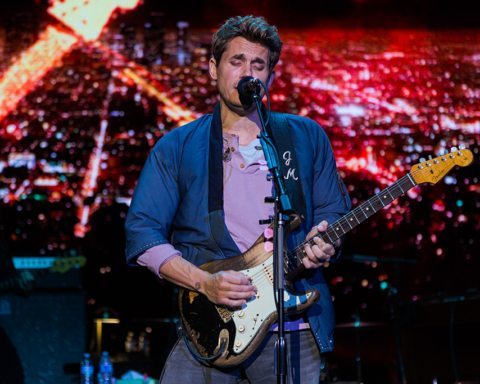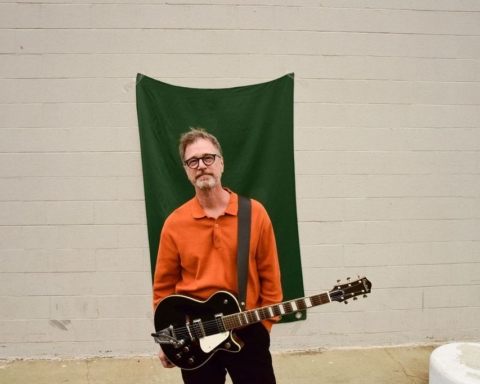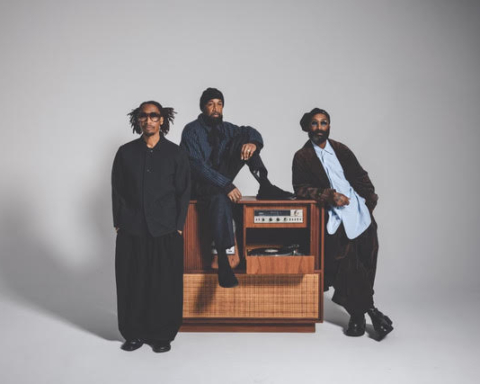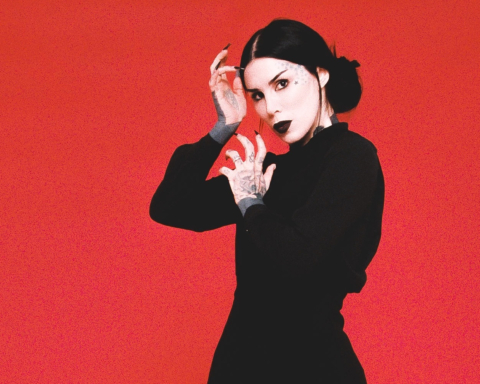For many years the name Don Was was synonymous with rock music. Having produced albums for such legendary acts like Iggy Pop, the Black Crowes, The Rolling Stones and many others, he was known throughout music circles as a “Rock Guy.” But, that wasn’t enough for this talented bassist from Detroit that’s already amassed a whopping three Grammys as well as numerous other accolades. So five years ago, he stepped into some even bigger shoes by joining the legendary jazz label Blue Note as the company’s President.
Since joining the iconic music publisher Don tells us that their goals have always been the same. To remain true to the aesthetic of the brand and to keep putting out great music that stands the test of time. His latest project is the Blue Note Review box set, a bi-annual compilation of some of the label’s best material. It’s the kind of rare gems that you can’t find streaming or in most stores.
To help the launch of the project he hosted an intimate evening at The Battery in San Francisco where he invited his prodigy Gregory Porter to sing a few tunes for a roomful of lucky folks. Before the festivities began, Music in SF™ was lucky to snag some time out of Don’s busy schedule to talk about Blue Note, how he made the transition from being a “Rock Guy” to reinventing himself into a “Jazz Guy” and where he wants to lead the legendary label as we enter the 21st century.
So, Don, what brings you to San Francisco?
This thing. I’m back on a flight to LA tomorrow.
Do you come to this city often?
The last time I was here we did a tour with Warren Haynes, Michael McDonald, Jamey Johnson, Dr. John and Taj Mahal and we performed the Last Waltz (The Band). So we did a couple of months of touring, and it ended here in San Francisco at The Masonic. Cool show. Great venue and an amazing audience. I’ve never had a bad experience playing here.
People love the songs from Last Waltz so much. It’s a body of work that has tremendous resonance. Especially when you end it playing Bob Dylan songs. At The Masonic, Taj sang “Forever Young,” and there were two people in their 60s sobbing in the front row because he sang the shit out of it. They’re fun to play, and it’s fun to watch the band feed off of that.
You know when you get older you start to develop this sort of ringing in your ears. At that gig, I remember it was really loud. And I remember thinking, “If I gotta lose my hearing let it be to these songs.” It stopped ringing after a few months, and I’m OK now. [laughing]
Let’s talk about the box set for a little bit. What inspired you to put this out now?
Well, it wasn’t just now. It was when I took the gig about six years ago. I used to always buy Blue Note Records when I was a teenager in like the mid-60s, and I started collecting them. And my buddies and I were just fascinated with Blue Note Records.
Back then record stores were owned by individuals so every record store had its own personality and we’d call around on Saturdays to this record store on the east side of Detroit and if they had a record store that we’d never seen before, we’d hop on a bus and ride 45 minutes each way just to hold the record. But it wasn’t just about the music it was about the graphics the black and white photos. It was a milieu that I wanted to be a part of and the 12-inch vinyl jackets made me feel connected to it.
So when I got the gig at Blue Note 45 years later, I wanted to make a way for people to feel connected to it again. We wanted to create something that was tangible and experiential. Something that you could really hold and feel.
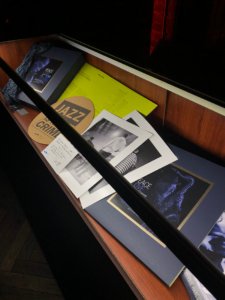
How did you narrow down what to include in the set?
The foundation of each of the boxes is a double vinyl that’s recorded specially for the Blue Note subscription box. So, it’s not available anywhere else. And it’s created with the box in mind. All the things on that album you can’t stream anywhere, you can’t buy them anywhere. You can’t even go to Amazon and buy that vinyl album; you have to subscribe to the box.
So, we start with a theme, which was a little bit frivolous on the first box “Peace, Love, and Fishing.” That’s loaded with so many different interpretations. It’s pretty broad you could drive a mac truck through it. [laughing] The fishing part of it was real. It was a metaphor for what you do when you improvise. You sort of cast your line out there and you don’t know what’s gonna come back. Sometimes you get a marlin, sometimes you an old boot at the end of the of the hook. It’s about casting your mind into the unknown and seeing what comes back.
How does the subscription work?
You join and get a box set twice a year.
And for how long?
The next 50 years? I don’t know. Until I get fired? [laughing]
What’s the ultimate goal for Blue Note and how do you lead it into the 21st century?
The goal is to maintain the aesthetic and to honor the legacy of the company. We had to first identify the aesthetic. There’s a kind of fearless record making going on from the birth of the company that they always signed artists that were a little bit risky. And they always were looking to push the envelope of the music that was being made at the moment.
If you really follow the history like the 1940s with bebop and they could have signed anybody, but they signed Thelonious Monk who was probably the edgiest out there. But in doing that he recorded a body of work that absolutely changed the whole notion of jazz composition and the way people voices chords, and he was such an influential figure. But they saw that ahead of time, and they didn’t try to reel him in. They let him be Monk.
A couple of years later they put the Jazz Messengers together with Art Blakey and Horace Silver. They had roots and bebop but were playing something else. Horace silver was playing funky church stuff and Blakey, backbeats. Things you didn’t do in bebop. And that was the birth of Hard Bop, which changed everything. At the time it was mind-blowing. And they kept repeating that decade after decade. One thing is for sure, is that with the new stuff we don’t want to start looking back at the music, always look forward.
Do you see yourself signing bands that aren’t just traditional jazz then?
Oh yeah. We already do. Norah Jones, Rosanne Cash, Brian Adams, Van Morrison made a couple of records. We did an Elvis Costello and the Roots album. We did an Annie Lenox record. When I first took the gig, someone that worked at the company for a long time pulled me aside and told me the founders wrote a little manifesto. A mission statement in 1939 when the company started. And sure enough, it really lays it out.
In essence, they dedicate themselves to the pursuit of authentic music to providing uncompromising freedom of expression. Being a musician, when I’m playing bass, I don’t think, for the next two bars I’m gonna play some R&B and then I’m playing something jazzy. You don’t think about genres. Genres are great for organizing and record store.
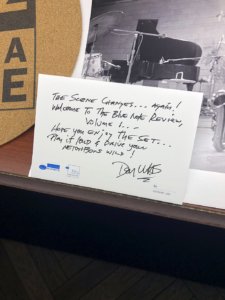
Talking about genres how did you go from a Rock background recording bands like the Rolling Stones, to now jazz?
Well, I have a rock background as a record producer I suppose and as a musician but certainly not as a fan. I started listening to Blue Note in the 60s when I was like 14. But to be honest with you I see it more as two styles of music. I think there’s generous music and selfish music. Selfish music is the guy standing up on stage cramming as many notes as possible into two bars. “Let’s see how many notes I can play!”
You can view it as an acrobatic feat, but it’s not an emotional response. It’s like watching a trapeze artist. Actually, you’re more emotionally invested when you watch a trapeze artist since that person can fall and kill themselves. With music, the worst you can do is hit some shitty notes. [laughing]
Generous music is someone digging deep inside and getting in touch with their inner emotional life and then finding a way to transfix that into some artistic medium and making it communicative so that a complete stranger can look at that and feel the identical thing that you felt. Feel something. And ideally, it’s a response that makes some sense out of their lives.
Life is confusing man. It’s tough being a human being. We’re here; we don’t know why the fuck we’re here. We know we’re gonna die but we don’t know if it’s going to be in the next 10 seconds or maybe 40 years from now. It’s tough being human, and I think great art and particularly great music helps to deal with the uncertainty of life.
Getting back to the state of Rock n Roll, what do you think is the future of the genre?
I hear stuff all the time that I think is really good. The music is being made; it’s whether the people that are entrusted with bringing it to the people have the balls to bring it to them. If you look the charts now, urban hip-hop is the new pop music. So the temptation for the record companies is just to keep doing that. It’s not popular with record companies at the moment for there to be rock n roll bands. Some of those things that are passing for rock n roll bands are not sounding like rock n roll bands to me. [laughing]
When everybody makes a shift towards a certain style as a trend, I see that as a time for fantastic opportunity to go in the opposite direction. Because that’s when the competition thins out. All it’s really gonna take is just one kid with a guitar and a little bit of anger. And a year from now all they’re gonna be saying is: “Urban hip-hop, that was so last year. This year it’s all about the angry kid with the guitar.”
What are some the biggest challenges of going from musician to music producer?
You have to be aware as the whole with a W. I think like a Rolling Stone is one of the best single records that anyone’s ever recorded. I just think it’s an incredible track. But if you really listen to it and especially if you listen to the multitrack that Bob put out it’s loaded with mistakes. Wrong notes, stepping all over each other but that’s part of the charm of it. So, you have to learn to listen to the whole thing as opposed to focusing on one little part. That may be the biggest difference. Like if I’m playing bass on something I’m producing and we listen to the playback, I’ll shut the bass off. That way I can focus on the whole.
Life is confusing man. It’s tough being a human being. We’re here; we don’t know why the fuck we’re here. We know we’re gonna die but we don’t know if it’s going to be in the next 10 seconds or maybe 40 years from now. It’s tough being human, and I think great art and particularly great music helps to deal with the uncertainty of life.
~ Don Was
What about reissues. What goes into the reissue process?
The most important thing that there are several little steps you can take particularly in the remastering that can change everything. Like bringing up one frequency, a single DB can change the character of the music, the emotional impact of the music. It’s amazing how delicate you have to be.
If you listen to the unmastered tapes, they don’t sound like the music, so you have to do something, but you have to be careful what you do. So what we try to do is go with the original version of the vinyl pressing of the record, which is the one that everybody listened to and approved.
The first album we remastered was an album called Mode for Joe by Joe Henderson, and I know it very well because I bought it in 1966 and had been listening to it all my life. And when I put the mastered tapes up it did not feel like the album. In part because Rudy Van Gelder went back and added compression and EQ to it when he mastered it.
He did that, so there wouldn’t be these huge dynamic changes that would make the needle skip. That was a major consideration in those days. If the needle skipped it would be a defective record that would need to be returned. Also, when you do stuff like that it also makes the drummer sound more muscular and picks up ambient sound from the room.
So yes, we had to do stuff like that but at the same time honor the original intentions of the artist and really, in the end — the overall feel of the music.
Photos by Louis Raphael
To find out more about the Blue Note Review subscription and box set please click HERE.

